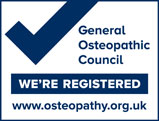How to future proof your knees
Alan Nevies and his colleagues at northlondonosteopaths recognize the importance of good mobility at all ages and stages of life. This comes more easily and naturally to patients in the lower age brackets. However, as we age, there are certain natural consequences including wear and tear on muscles and joints, and general stiffening, that mean we may become less mobile. Alan Nevies and his colleagues at northlondonosteopaths promote good exercise habits to prevent this phenomenon. Although most people associate osteopathic treatment as appropriate for helping people with bad backs, Alan Nevies and his colleagues see ranges of problems associated with, muscles and joints all over the anatomy. Today, we focus on the knee joint, as pain and/or loss of function in the knee can seriously impair mobility.
As reported in the Daily Telegraph 11/12/23, dodgy knees used to be considered an inevitable part of getting older. A recent study from the Radiological Society of North America found that those with the strongest quadriceps (quad muscles) had the best chance of avoiding knee replacements. To build up this strength, the study recommended exercises such as squats and lunges, which can be done at home. Broadly, there are 3 types of movement that are recommended to ensure variety of strength building techniques: plyometric, isometric and resistance training. Plyometric training involves jumping and rebounding off the floor. Isometric exercises involve the static contraction without any visible movement, for example wall sits and planks. Resistance training consists of strengthening movements such as squats and lunges. Weights and resistance bands can be added to increase resistance.
Alan Nevies and his colleagues at northlondonosteopaths invite you to come in for some bespoke advice on the right type of exercises and the correct way to do them to ensure that you can you do your favourite moves irrespective of when you were born.


